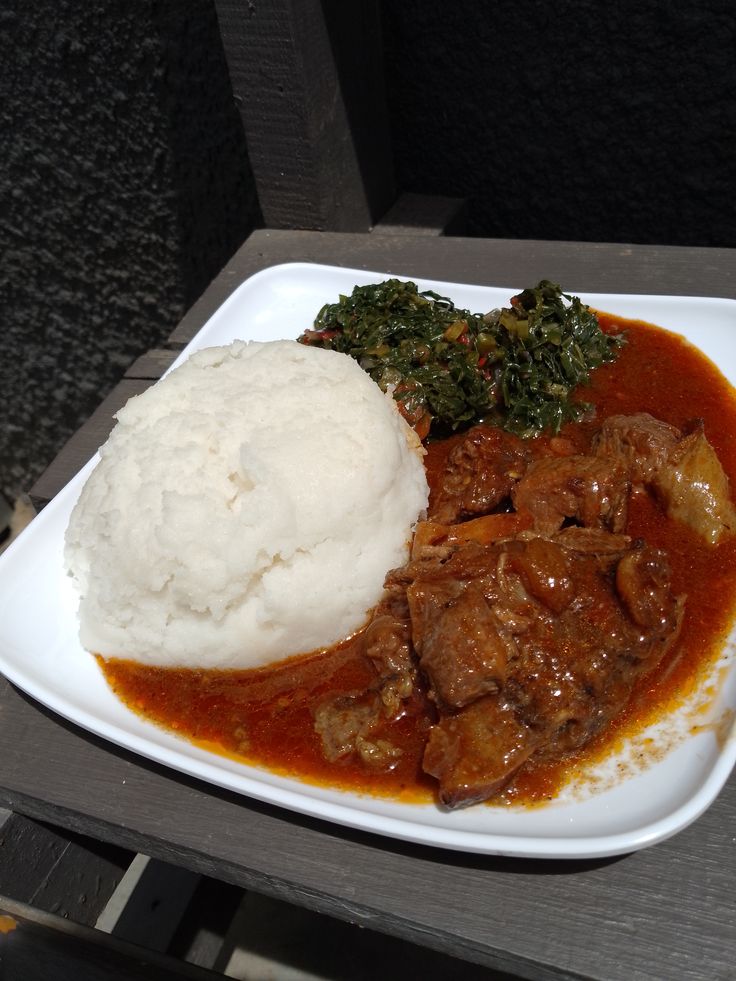East Africa showcases stunning wildlife and scenic landscapes, but travelers to Rwanda and Uganda also discover remarkable culinary traditions. Both countries blend locally sourced ingredients with centuries-old cooking techniques. From street foods to ceremonial dishes, the flavors reveal stories of history, agriculture, and cultural identity. This guide highlights must-try dishes in Rwanda and Uganda, answering the questions travelers frequently search for when planning a culinary journey. Dishes You Must Try in Rwanda and Uganda
What are the traditional foods in Rwanda and Uganda?
Rwandan and Ugandan cuisines feature staple foods such as plantains, beans, cassava, sweet potatoes, and maize. Chefs complement these staples with meat, fish, and dairy, often cooking them with local spices and sauces. Meals emphasize freshness, simplicity, and communal dining, reflecting the agricultural lifestyles of the region. Street food culture thrives in both countries, where vendors prepare affordable and flavorful dishes quickly. Travelers can experience traditional foods in restaurants, local markets, and homestays, making food a gateway to understanding local culture.
Rwandan Cuisine
What is Ugali (Ubugali) and why is it popular in Rwanda?
Rwandans prepare Ugali, locally called Ubugali, as a dense maize flour porridge that forms the base of many meals. It has a neutral flavor but pairs perfectly with stews, grilled meats, and vegetable dishes. People traditionally eat Ugali by hand, rolling it into small balls and dipping it into sauces. Chefs value it because it is inexpensive, filling, and versatile, reflecting Rwanda’s agrarian roots. Its consistent texture also symbolizes home-cooked meals and appears in both urban and rural dining settings.
What makes Isombe a traditional Rwandan dish?
Rwandans make Isombe by cooking cassava leaves with peanuts, palm oil, and occasionally fish. They mash the leaves into a rich, green paste and often combine them with smoked or fresh fish for protein. Families and communities traditionally serve Isombe during gatherings, reflecting its cultural significance. Preparing the dish requires skill to balance creamy texture with slightly bitter flavors. Visitors can enjoy Isombe in Rwandan homes, restaurants, and cultural festivals, experiencing a dish that connects locals and travelers alike.
How is Brochette prepared and served in Rwanda?
Rwandans grill Brochettes, skewered goat, beef, or chicken, over open flames, serving them with sauces or starches like Ugali. Street vendors and restaurants frequently prepare Brochettes, offering smoky, flavorful experiences. The dish symbolizes communal eating and celebration. People often pair it with French fries, plantains, or roasted vegetables, making it a versatile choice for casual snacks or dinner gatherings. Dishes You Must Try in Rwanda and Uganda
Why is Ibihaza (pumpkin with beans) significant in Rwandan cuisine?
Rwandans combine mashed pumpkin with cooked beans to make Ibihaza, seasoning it with local herbs and spices. This comfort food becomes especially popular during harvest periods. The dish emphasizes Rwanda’s focus on plant-based, locally grown ingredients. Sweet pumpkin and protein-rich beans create a balanced, nutritious meal that has sustained communities for generations. Dishes You Must Try in Rwanda and Uganda
What role do sweet potatoes and cassava play in Rwandan meals?
Rwandans use sweet potatoes and cassava as essential starches. They boil, roast, or mash them, serving them alongside stews and grilled meats. Cassava flour also forms the base for Ubugali, while sweet potatoes appear as snacks or side dishes. Both tubers provide carbohydrates to fuel daily activities and demonstrate Rwanda’s reliance on root crops in urban and rural diets.
Ugandan Cuisine
What is Matoke and why is it Uganda’s national dish?
Ugandans prepare Matoke by steaming and mashing green bananas with onions, tomatoes, and sometimes meat. It serves as Uganda’s national dish, appearing in homes and restaurants throughout the country. Preparing Matoke requires careful peeling and cooking to achieve soft, flavorful results. Traditionally, people eat it by hand, pairing it with sauces, beans, or meat. Matoke reflects Uganda’s agricultural abundance and offers nutritional value and versatility.
How is Rolex made and why is it popular in Uganda?
Ugandan street vendors create Rolex by rolling an omelet and vegetables inside a chapati. Its name comes from the playful combination of “rolled eggs.” Vendors cook Rolex quickly on hot griddles, offering a convenient and affordable meal. People customize it with tomatoes, onions, cabbage, and spicy sauces. Rolex has gained international recognition as a symbol of Ugandan street food culture, especially in Kampala.
What makes Luwombo a unique Ugandan delicacy?
Ugandans prepare Luwombo as a stew with meat, fish, or groundnuts, wrapped in banana leaves and steamed slowly. The leaves impart a distinct flavor while keeping ingredients moist. Chefs typically reserve Luwombo for special occasions and cultural ceremonies. Its preparation requires multiple steps and careful seasoning, making it a dish that showcases Ugandan culinary heritage and appeals to travelers seeking authentic experiences.
Why are chapati and street food important in Uganda?
Ugandans prepare chapati, a thin flatbread influenced by Indian cuisine, to accompany stews, beans, meats, and Rolex rolls. Street food, including grilled meats, samosas, and fried snacks, reflects Uganda’s urban lifestyle. Vendors serve meals quickly, offering affordable and flavorful options. Tourists experience local life by sampling these foods, which hold both practical and cultural significance. Dishes You Must Try in Rwanda and Uganda
How do groundnut (peanut) sauces feature in Ugandan meals?
Ugandans make groundnut sauces by combining crushed peanuts, water, and spices. They serve the sauces with rice, cassava, sweet potatoes, and vegetables. Rich in protein and healthy fats, these sauces highlight peanuts’ nutritional importance. They also demonstrate East Africa’s culinary ingenuity, transforming simple legumes into flavorsome accompaniments for everyday meals.
What soups and stews are common in Rwanda and Uganda?
Chefs in Rwanda and Uganda prepare hearty soups and stews using beans, meat, leafy greens, and local spices. Popular options include bean stews, peanut stews, and fish soups. Cooking these dishes slowly develops deep flavors, and people serve them with starches like Ugali, Matoke, or rice. Soups and stews emphasize communal dining, nutritional balance, and seasonal ingredients.
How important are beans in Rwandan and Ugandan diets?
People consider beans a dietary cornerstone in both countries. They offer protein and versatility, appearing in everyday meals. In Rwanda, people pair beans with pumpkin, cassava leaves, or Ugali, while in Uganda, beans appear in stews or alongside Matoke. Affordable and nutritious, beans sustain communities and support local agriculture.
What drinks and beverages are popular in Rwanda and Uganda?
Rwandans and Ugandans enjoy locally brewed beverages such as banana beer, sorghum beer, and milk-based drinks. Coffee plays a central role, especially in Rwanda, where it serves as both a cultural staple and premium export. Fresh fruit juices, hibiscus tea, and locally made sodas provide refreshing options. Beverages complement meals and social gatherings, reflecting the region’s hospitality and agricultural abundance.
How do cultural traditions influence food preparation in Rwanda and Uganda?
People tie food preparation in Rwanda and Uganda closely to cultural traditions. Ceremonial dishes, festive foods, and daily meals follow techniques passed through generations. Chefs source ingredients locally, often from small-scale farms, emphasizing sustainability and community support. Families cook and share meals together, reinforcing bonds and preserving cultural identity through food.
| Dish | Country | Main Ingredients | Preparation Style | Where to Try |
|---|---|---|---|---|
| Ugali (Ubugali) | Rwanda | Maize flour, water | Boiled into dense porridge | Local restaurants, homestays, street vendors |
| Isombe | Rwanda | Cassava leaves, peanuts, palm oil, fish | Boiled and mashed, served with fish | Traditional Rwandan homes, cultural festivals |
| Brochette | Rwanda | Goat, beef, or chicken, spices | Skewered and grilled over open flames | Street vendors, restaurants, markets |
| Ibihaza | Rwanda | Pumpkin, beans, local herbs | Boiled and mashed | Village meals, local eateries |
| Sweet Potatoes & Cassava | Rwanda | Sweet potatoes, cassava | Boiled, roasted, or mashed | Markets, rural homestays, roadside vendors |
| Matoke | Uganda | Green bananas, onions, tomatoes, meat | Steamed and mashed | Restaurants, home kitchens, cultural events |
| Rolex | Uganda | Chapati, eggs, vegetables | Omelet rolled in chapati | Street vendors, Kampala urban centers |
| Luwombo | Uganda | Meat, fish, groundnuts, banana leaves | Wrapped in banana leaves and steamed | Special occasion meals, cultural ceremonies |
| Chapati | Uganda | Wheat flour, oil, water | Rolled thin and fried | Street food markets, restaurants |
| Groundnut Sauce | Uganda | Peanuts, water, spices | Cooked into rich sauce | Homes, street food, restaurants |
| Fish Stew | Rwanda & Uganda | Freshwater fish, tomatoes, onions, spices | Simmered slowly | Lakeside towns, local restaurants |
| Bean Stew | Rwanda & Uganda | Beans, onions, tomatoes, local spices | Boiled and stewed | Markets, local eateries, family meals |
| Sorghum Beer | Rwanda & Uganda | Sorghum, water, yeast | Fermented traditional brew | Local bars, village gatherings |
| Banana Beer | Rwanda & Uganda | Bananas, sugar, yeast | Fermented naturally | Villages, traditional ceremonies |
| Fresh Fruit Juices | Rwanda & Uganda | Mango, passionfruit, pineapple | Freshly blended | Restaurants, roadside stands, markets |
Conclusion
Rwanda and Uganda offer travelers a rich culinary landscape beyond wildlife and landscapes. From Rwanda’s Isombe and Brochettes to Uganda’s Matoke and Rolex, these dishes showcase local agriculture, history, and cultural traditions. Sampling them offers more than sustenance; it provides insight into daily life, celebrations, and heritage. Exploring East African cuisine remains essential for anyone seeking to understand and connect with the people of the region.




